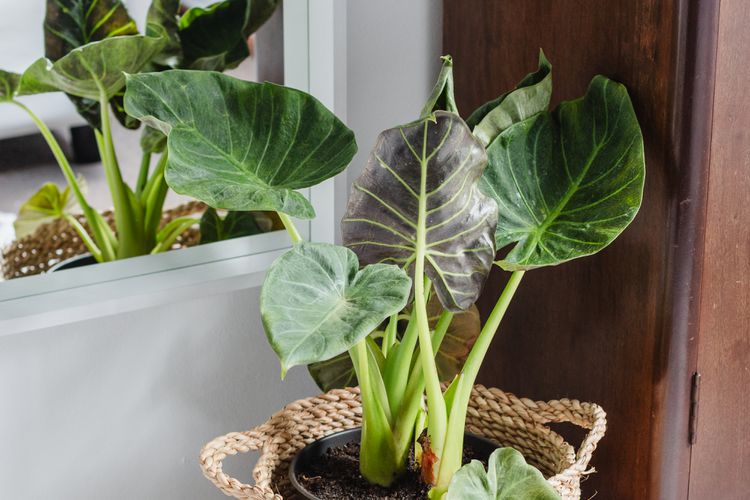The Alocasia Odora, also known as the giant elephant ear or night-scented lily, is a striking tropical plant known for its huge, arrow-shaped leaves Native to Southeast Asia, these plants can grow up to 10 feet tall and add major jungle vibes to any indoor or outdoor space
Caring for an Alocasia Odora may seem intimidating, but it’s easier than you think with the right care techniques. In this complete guide, we’ll walk through everything you need to know to keep your Alocasia Odora healthy and thriving.
Light Requirements
Alocasia Odora thrives in bright indirect sunlight. Direct sun will scorch the leaves but too little light will cause leggy growth. Place it near an east or west facing window indoors where it will get 4-6 hours of gentle sunlight filtered through a sheer curtain. Outdoors, situate it in partial to full shade. Morning sun is tolerable, but afternoon sun is too intense.
Adjust light levels seasonally. In spring and summer you can move it closer to the window or into a spot with more dappled sun. In fall and winter give it slightly less light to mimic its native jungle habitat.
Soil Needs
These jungle plants require rich, fertile, well-draining soil. Mix regular potting soil with perlite, peat moss, and orchid bark to improve drainage and aeration. For in-ground planting, work in compost and sand to keep heavy clay soils loose.
The soil should be moist but never soggy. Allow the top 1-2 inches to dry between waterings. Add pebbles to the bottom of pots to improve drainage.
Watering and Humidity
Alocasia Odora thrives in consistently moist soil and high humidity. Water thoroughly whenever the top few inches become dry. Allow excess water to drain fully from the holes at the base of the pot to prevent soggy soil.
Mist the leaves daily or place on a pebble tray filled with water to boost humidity. Indoors, use a humidifier to maintain 60-70% humidity. The large leaves lose moisture quickly in dry indoor air, so boosting humidity is essential.
Temperature Needs
Warm temperatures between 65-85°F are ideal for these tropical jungle plants. Keep away from drafty windows in winter, and avoid hot sun in summer. Move outdoors in summer in zones 9-11. In cooler zones, keep as a houseplant year-round.
If temperatures drop below 50°F, the leaves can blacken or die back. Hot sun over 90°F can scorch the foliage. Stability is key – avoid extremes and fluctuations.
Fertilizer
Feed with a balanced liquid fertilizer diluted to half strength every 2-4 weeks during spring and summer. Avoid fertilizing in fall and winter when the plant is dormant.
Look for a fertilizer containing macro and micronutrients like nitrogen, phosphorus, potassium, iron, calcium, and magnesium. This provides complete nutrition for lush foliage growth.
Propagating Alocasia Odora
Propagate by dividing overgrown plants in spring or summer. Gently tease the root ball apart, keeping as many roots intact on each division as possible. You can also remove and pot up offsets that arise around the base of the mother plant.
Cuttings are possible but less reliable. Use a sterile knife to take 4-6 inch stem cuttings below a leaf node. Dip in rooting hormone and pot up in seedling mix, keeping warm and humid until new growth emerges.
Common Problems and Fixes
Yellow leaves – Usually signaling overwatering. Allow soil to dry out more between waterings. Improve drainage.
Brown leaf tips – Caused by low humidity. Increase misting and humidity levels.
Drooping leaves – Indicates too little water or nutrients. Check soil moisture and fertilize if needed.
Leaf spots – Can indicate a fungal issue from excess moisture. Improve air circulation and water less.
Pests – Watch for aphids, mealybugs, spider mites. Wipe leaves with insecticidal soap or neem oil.
Tips for Optimal Growth
-
Give bright, indirect light from an east or west window
-
Keep soil consistently moist but not waterlogged
-
Maintain 65-85°F temperatures and 60-70% humidity
-
Fertilize regularly in spring and summer
-
Repot when rootbound in spring or summer
-
Propagate by division or offsets for new plants
-
Prune dead leaves and spent flowers as needed
-
Rotate the pot periodically for even growth
With the proper care, Alocasia Odora will reward you with huge, jungle-like leaves on a statuesque plant. Follow these tips, and you’ll have a happy, healthy specimen that thrives indoors or outdoors. Just beware – these tropical beauties can become addicting! Once you have one Alocasia, you’ll soon be craving more of these exotic elephant ears.

Mastering Alocasia Care – Tips and Tricks
FAQ
How often should I water alocasia odora?
Alocasia Odora enjoy watering about every 2 weeks, frequent misting, and keeping their soil moist but not wet. We recommend allowing the top 2 to 3 inches of soil to dry out between watering to prevent overwatering and root rot.
Why are the leaves on my alocasia Odora turning yellow?
Yellowing leaves on an Alocasia odora are often a sign of stress, with overwatering being the most common culprit.
Does alocasia odora like sun or shade?
Light: Alocasia odora prefers bright, indirect light. An east-facing window that offers soft morning sunlight or a south-facing window with diffused light is ideal. Too much direct sunlight can scorch the leaves, while too little can lead to leggy growth.
How do you care for Alocasia indoors?
Alocasia plants are recognized for their ease of care. They thrive in bright, indirect light and prefer well-draining soil. While they require regular watering, it’s important not to overwater them as this can lead to root rot. With proper care and attention, these plants can flourish indoors for many years.
